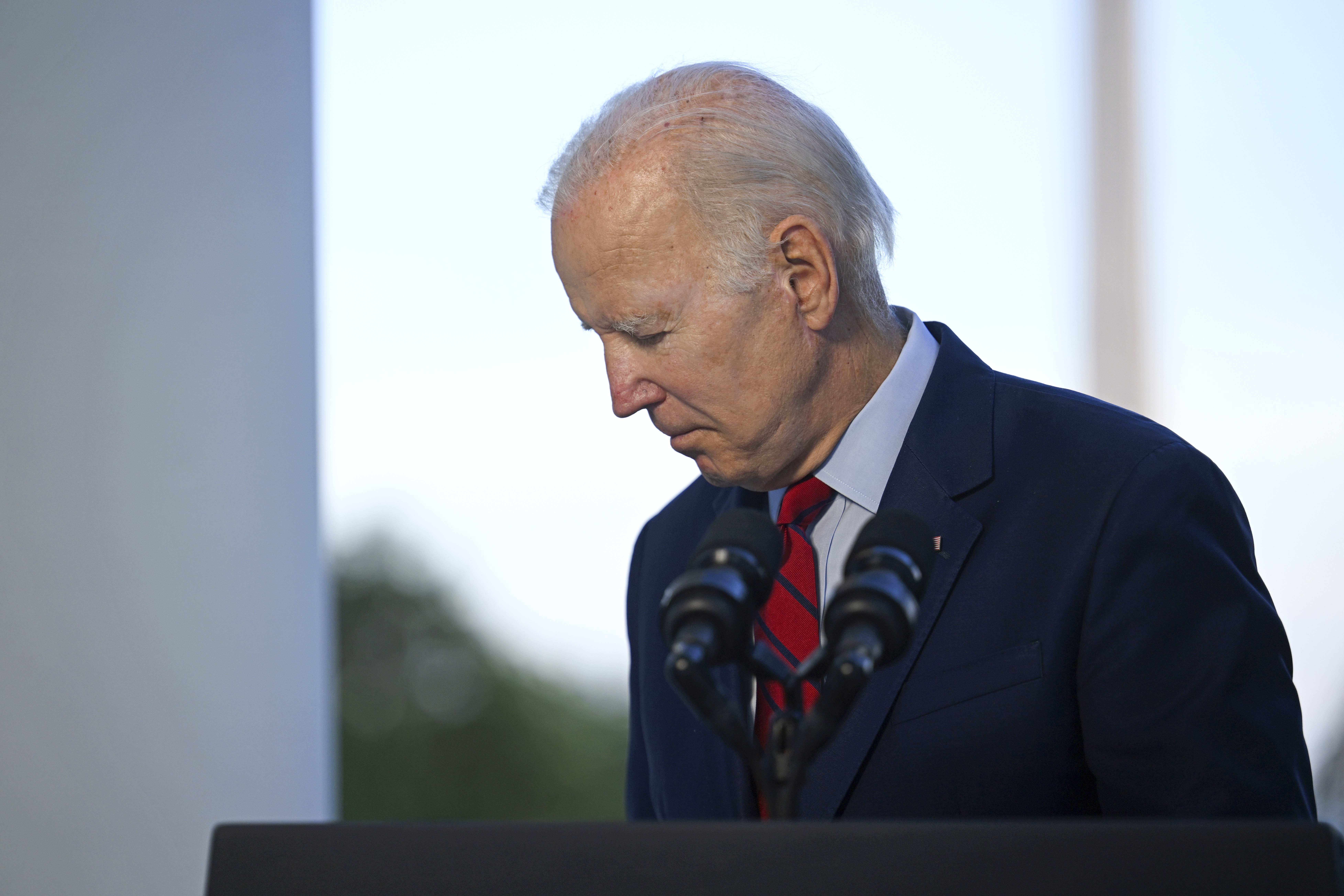Upcoming Biden book recounts untold timeline of Afghanistan withdrawal
Atlantic staff writer Franklin Foer recounts an unflinching look at the U.S. withdrawal from Afghanistan in his upcoming book.


By the end of the U.S. withdrawal from Afghanistan in August 2021, President Joe Biden was sure he made the right decision after watching the events unfold in the Situation Room.
“Biden didn’t have time to voraciously consume the news, but he was well aware of the coverage, and it infuriated him. It did little to change his mind, though,” Franklin Foer writes in his upcoming book, an excerpt of which was released Tuesday. “In fact, everything he’d witnessed from his seat in the Situation Room confirmed his belief that exiting a war without hope was the best and only course.”
“So much of the commentary felt overheated to him. He said to an aide: ‘Either the press is losing its mind, or I am,’” Foer writes.
The chaotic and violent withdrawal from Afghanistan is well-known, but in his new book “The Last Politician: Inside Joe Biden’s White House and the Struggle for America’s Future,” Foer recounts an unflinching look at the previously untold timeline of events leading up to the withdrawal and the aftermath of it. The book, which is set to be released next week from Penguin Random House, recounts the first two years of the Biden presidency, ending with the 2022 midterm elections. Foer is a staff writer at The Atlantic and former editor at The New Republic.
When National Security Adviser Jake Sullivan relayed the news to Biden that former Afghan President Ashraf Ghani fled the country, he writes, Biden exploded in frustration and said, “Give me a break.”
In the excerpt, Foer depicts a scene that went viral of the withdrawal: when dozens of Afghans climbed onto the side of a jet to escape the country.
“Only after the plane had lifted into the air did the crew discover its place in history,” Foer writes. “When the pilot couldn’t fully retract the landing gear, a member of the crew went to investigate, staring out of a small porthole. Through the window, it was possible to see scattered human remains.”
Multiple people were killed during the U.S.-led airlift from Kabul International Airport. The withdrawal received heated criticism, especially from Republican lawmakers who have called for investigations surrounding the departure. Within days of the withdrawal, Biden's poll numbers went down, with a majority of Americans disappointed in his handling of the withdrawal.
When former ambassador to Afghanistan John Bass touched down in Afghanistan after the plane's departure to lead the evacuation effort, he toured the gates of the airport where he was greeted “by the smell of feces and urine, by the sound of gunshots and bullhorns blaring instructions in Dari and Pashto.”
“Dust assaulted his eyes and nose. He felt the heat that emanated from human bodies crowded into narrow spaces,” Foer writes.
Biden would shower Bass with ideas to evacuate more people.
“The president’s instinct was to throw himself into the intricacies of troubleshooting,” Foer writes. “‘Why don’t we have them meet in parking lots? Can’t we leave the airport and pick them up?’ Bass would kick around Biden’s proposed solutions with colleagues to determine their plausibility, which was usually low. Still, he appreciated Biden applying pressure, making sure that he didn’t overlook the obvious.”
“In total, the United States had evacuated about 124,000 people, which the White House touted as the most successful airlift in history,” Foer writes. “Bass also thought about the unknown number of Afghans he had failed to get out.”












